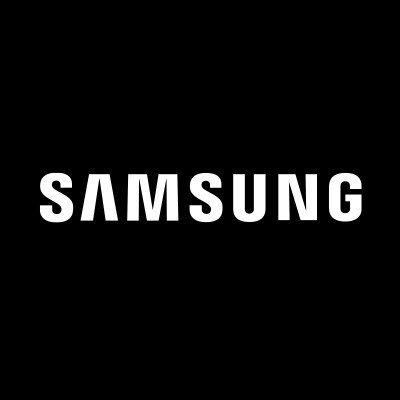The Rise of Smart Rings: A New Era in Health Monitoring
January 7, 2025, 3:37 am

Location: United States, California, San Francisco
Employees: 10001+
Founded date: 1938
Total raised: $6.4B

Location: Finland, Mainland Finland, Oulu
Employees: 201-500
Founded date: 2013
Total raised: $439.16M
In the world of wearable technology, smart rings are emerging as the new frontier. At CES 2025, two innovative products took center stage: the Circular Ring 2 and the VIV™ Ring. Both devices promise to redefine personal health management, but they do so in strikingly different ways.
The Circular Ring 2 is a sleek, compact device that boasts advanced health monitoring features. It surpasses its predecessor with FDA approval for ECG functionality and the ability to detect atrial fibrillation. This is a game-changer for users keen on tracking their heart health. The ring captures single-channel ECG data using an advanced photoplethysmography (PPG) sensor. This technology shines a light on your skin, measuring blood flow changes to provide insights into your cardiovascular health.
The Circular Ring 2 is set to launch through a crowdfunding campaign in mid-January, with deliveries expected by March. Priced at $380, it sits above the Oura Ring 4 and Samsung Galaxy Ring, which retail for $349 and $399, respectively. However, unlike its competitors, the Circular Ring does not require a subscription, making it an attractive option for budget-conscious consumers.
Battery life is another strong suit for the Circular Ring 2. With a promise of up to eight days on a single charge, it outlasts many of its rivals. The accompanying app has also been revamped for a more intuitive user experience, ensuring that health data is easy to access and understand. The ring will be available in various finishes, including gold, silver, and rose gold, appealing to a wide range of aesthetic preferences.
On the other hand, the VIV™ Ring introduces a unique twist to the smart ring concept. It is the first device to incorporate generative sleep aid sound technology. This innovation goes beyond traditional biometric measurements, offering users a holistic approach to health management. The VIV™ Ring analyzes biometric signals such as heart rate and oxygen saturation while generating personalized soundscapes to enhance sleep quality.
The VIV™ Ring aims to revolutionize how users perceive health monitoring. It features a user-friendly app that simplifies data visualization, setting it apart from competitors like Oura and Samsung Galaxy Ring, which can feel cumbersome. The VIV™ Ring is designed for seamless integration with Apple Health, with an Android version expected soon.
What truly distinguishes the VIV™ Ring is its focus on natural soundscapes. Instead of relying on synthetic sounds, it offers recordings of ocean waves, rainfall, and birdsong. This approach aims to create a calming environment conducive to better sleep. The technology behind this is backed by proprietary patents, making it a standout in the crowded wearable market.
Both rings emphasize style and comfort. The Circular Ring 2 features a more ergonomic design, while the VIV™ Ring boasts a diamond-cut finish that enhances its luxury appeal. However, the VIV™ Ring's unique sensor technology ensures a comfortable fit, avoiding the discomfort associated with some competing products.
As these smart rings prepare for their market launches, they signal a shift in consumer expectations. Users are no longer satisfied with basic fitness tracking. They seek comprehensive health insights delivered in a stylish, user-friendly package. The rise of smart rings reflects a growing awareness of personal health management, with consumers eager to take control of their well-being.
However, challenges remain. The price point of these devices may deter some potential users. Spending over $300 on a gadget is a significant investment, especially for those who may not prioritize health tracking. As technology advances, there is hope that prices will decrease, making these devices more accessible.
Moreover, while both rings offer impressive features, they lack certain functionalities that could enhance their appeal. For instance, neither device supports smart home integration or contactless payment options. As the market evolves, consumers may expect these features to become standard.
The competition between the Circular Ring 2 and the VIV™ Ring is just the beginning. As more companies enter the smart ring arena, innovation will continue to drive the industry forward. The potential for smart rings to evolve into medical devices is also on the horizon. VIV Health is already collaborating with a top university hospital in Korea to develop a medical-grade version of their ring, capable of measuring blood pressure and detecting atrial fibrillation.
In conclusion, the smart ring market is poised for explosive growth. With devices like the Circular Ring 2 and VIV™ Ring leading the charge, consumers can expect a new era of health monitoring. These gadgets are not just accessories; they are tools for empowerment. As they become more sophisticated and affordable, smart rings could become essential companions in our quest for better health. The future is bright, and it fits snugly on your finger.
The Circular Ring 2 is a sleek, compact device that boasts advanced health monitoring features. It surpasses its predecessor with FDA approval for ECG functionality and the ability to detect atrial fibrillation. This is a game-changer for users keen on tracking their heart health. The ring captures single-channel ECG data using an advanced photoplethysmography (PPG) sensor. This technology shines a light on your skin, measuring blood flow changes to provide insights into your cardiovascular health.
The Circular Ring 2 is set to launch through a crowdfunding campaign in mid-January, with deliveries expected by March. Priced at $380, it sits above the Oura Ring 4 and Samsung Galaxy Ring, which retail for $349 and $399, respectively. However, unlike its competitors, the Circular Ring does not require a subscription, making it an attractive option for budget-conscious consumers.
Battery life is another strong suit for the Circular Ring 2. With a promise of up to eight days on a single charge, it outlasts many of its rivals. The accompanying app has also been revamped for a more intuitive user experience, ensuring that health data is easy to access and understand. The ring will be available in various finishes, including gold, silver, and rose gold, appealing to a wide range of aesthetic preferences.
On the other hand, the VIV™ Ring introduces a unique twist to the smart ring concept. It is the first device to incorporate generative sleep aid sound technology. This innovation goes beyond traditional biometric measurements, offering users a holistic approach to health management. The VIV™ Ring analyzes biometric signals such as heart rate and oxygen saturation while generating personalized soundscapes to enhance sleep quality.
The VIV™ Ring aims to revolutionize how users perceive health monitoring. It features a user-friendly app that simplifies data visualization, setting it apart from competitors like Oura and Samsung Galaxy Ring, which can feel cumbersome. The VIV™ Ring is designed for seamless integration with Apple Health, with an Android version expected soon.
What truly distinguishes the VIV™ Ring is its focus on natural soundscapes. Instead of relying on synthetic sounds, it offers recordings of ocean waves, rainfall, and birdsong. This approach aims to create a calming environment conducive to better sleep. The technology behind this is backed by proprietary patents, making it a standout in the crowded wearable market.
Both rings emphasize style and comfort. The Circular Ring 2 features a more ergonomic design, while the VIV™ Ring boasts a diamond-cut finish that enhances its luxury appeal. However, the VIV™ Ring's unique sensor technology ensures a comfortable fit, avoiding the discomfort associated with some competing products.
As these smart rings prepare for their market launches, they signal a shift in consumer expectations. Users are no longer satisfied with basic fitness tracking. They seek comprehensive health insights delivered in a stylish, user-friendly package. The rise of smart rings reflects a growing awareness of personal health management, with consumers eager to take control of their well-being.
However, challenges remain. The price point of these devices may deter some potential users. Spending over $300 on a gadget is a significant investment, especially for those who may not prioritize health tracking. As technology advances, there is hope that prices will decrease, making these devices more accessible.
Moreover, while both rings offer impressive features, they lack certain functionalities that could enhance their appeal. For instance, neither device supports smart home integration or contactless payment options. As the market evolves, consumers may expect these features to become standard.
The competition between the Circular Ring 2 and the VIV™ Ring is just the beginning. As more companies enter the smart ring arena, innovation will continue to drive the industry forward. The potential for smart rings to evolve into medical devices is also on the horizon. VIV Health is already collaborating with a top university hospital in Korea to develop a medical-grade version of their ring, capable of measuring blood pressure and detecting atrial fibrillation.
In conclusion, the smart ring market is poised for explosive growth. With devices like the Circular Ring 2 and VIV™ Ring leading the charge, consumers can expect a new era of health monitoring. These gadgets are not just accessories; they are tools for empowerment. As they become more sophisticated and affordable, smart rings could become essential companions in our quest for better health. The future is bright, and it fits snugly on your finger.